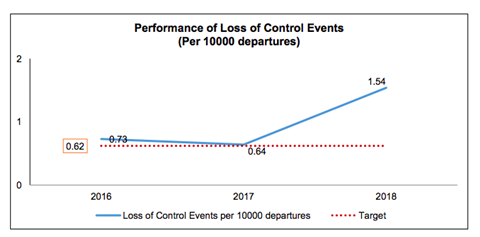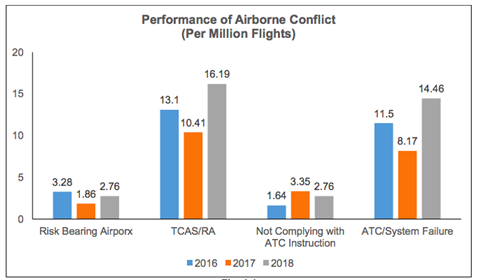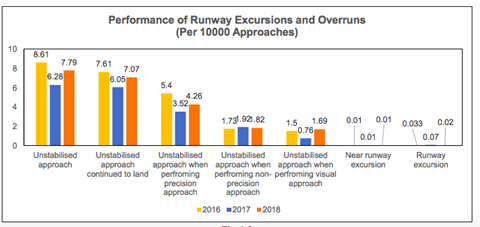NEW DELHI: The Directorate General of Civil Aviation (DGCA) has launched a probe into AirAsia India after a pilot levelled allegations of safety breaches by the airline on social media.
The pilot, who airline officials say has been suspended pending inquiry into disciplinary charges, had levelled charges in a video that went viral on Monday.
Taking cognisance of that, the DGCA tweeted: “DGCA has taken note of the concerns raised by some stakeholders against a particular airline and its approach to safety. DGCA has already started an investigation into the issues flagged and shall take appropriate action based on the outcome of the said investigation.”
In a statement, AirAsia India said that it “stands firmly on its value of ‘safety always’. The safety of our guests is of paramount importance in every aspect of our operations. AirAsia India is cognisant of the matter in regard to a social media post put up by one of its employees. We are cooperating with the DGCA on this matter. As a policy, AirAsia India does not comment on matters pertaining to its business or employees.”
Charges by the Pilot:-
The fear of taking a sick leave.
In the YouTube video where Taneja details the circumstances around his suspension, the AirAsia India pilot talks about an environment that discouraged pilots from taking a sick leave despite being unwell. This is a job that is responsible for about 200 people’s lives and needs a high level of physical and mental fitness.
Pilots from other airlines agreed with Taneja. “Pilots do fear asking for a sick leave, as it may lead to punitive action,” a pilot with over 20 years of flying experience, told Moneycontrol. The punitive action may be in the form of a lower bonus, at the end of the year.
“On any other job, one could go to work despite feeling a bit under the weather. As a pilot, I can’t afford to do that,” says the pilot cited above.
At the same time, added another aviator, the management also takes notice if a pilot is repeatedly taking sick leave or takes off on festivals despite being rostered to fly.
One does not know the factors around Taneja’s allegations, and only the investigation by DGCA can throw light.
SOPs not being followed
Taneja alleges that the airline was not strictly adhering to the SoPs issued by the government, on flying amidst COVID-19 times.
Though the pilot doesn’t get into the details on which SoPs were not being followed, one gathers he was talking about the procedures to be followed within the aircraft. Taneja alleges that he was forced to delay a flight by 40 minutes because SoPs were not being followed.
Is it the responsibility of the pilot-in-command (PIC) to ensure SoPs are followed in the flight, or should he just leave it to the ground handling team?
It’s a topic that seems to have different views.
“Pilot becomes responsible for the aircraft only once the doors are closed. Otherwise, he should let the ground handling team manage it,” says a senior executive from the industry.
Country’s largest airline IndiGo, another senior executive pointed out, details in its manual that the PIC assumes command of the flight the moment he signs the aircraft acceptance, and he is responsible “for the safe execution of the flight and for the safety of the occupants…and orderly conduct of the flight..”
The ‘flight’ is the key word here. The manual defines ‘flight’ to represent the period between ‘doors closed’ and ‘doors open.’
Amit Singh, an industry veteran and Fellow of London’s Royal Aeronautical Society, points to the Civil Aviation Regulations – which advises airlines on several aviation aspects. “The pilot-in-command shall be responsible for the safety of all crew members, passengers and cargo on board when the doors are closed,” says the CAR.
So going by the CAR, is Taneja technically responsible for the SoPs that are to be done before the doors close?
A senior pilot agreed with the CAR guidelines, but added that when it comes to the COVID-19 SoPs, the policy may differ from airline to airline.
On Taneja’s concerns, one will have to wait for the investigations to reveal if he was following the protocol laid down by the company, or not.
Flap 3 or Flap 4
Taneja’s third and final point was on Flap 3 and Flap 4.
Flaps are installed on an aircraft’s wings and are mainly used to create a drag in the speed of the plane while landing or taking off. This in turn can reduce the distance required for landing and take-off.
Flap 3 saves fuel – about 8kg – a reason why nearly all airlines advise their pilots to use this mode, rather than Flap 4.
But in the case of AirAsia India, alleges Taneja, the airline had made it mandatory for its pilots to use Flap 3, for 98 percent of their landings. In one particular month, Taneja says, he had done 10 landings, out of which seven were done using Flap 3, thus making it only 70 percent.
Two of the landings, says Taneja, were in Imphal where landing is complicated and thus he used Flap 4. Should he have compromised on passenger safety to save fuel, he asks.
Again, industry has differing views on this. “AirAsia India isn’t wrong in asking him to do a F3 landing to conserve fuel. It’s done the world over,” says a senior pilot with a private airline.
At the same time, pilots point out that few airlines put a target to using Flap3. “It’s an advisory. There are better ways to save fuel. In fact, if you plan your descent properly, a pilot can save more than 100 kg of fuel,” says a senior pilot.
Amit Singh says the solution may lie in wording the advisory. “If the airline wants its pilots to consistently perform FLAP 3 landings instead of Flap Full, then what should the policy read? As per my understanding, the policy should be:
“Normal flaps for landing is Flap 3 but, at the discretion of the pilot in command, up-to a maximum of 2 percent landings can be performed with Flap Full.
“People tend to avoid risk when a positive frame is presented but seek risks when a negative frame is presented,” Singh says in his blog Mindfly.
One can’t say if a different framing of the advisory would have prompted Taneja to react differently. At the same time, it’s an interesting thought. Can policymakers bring in more positivity to their regulations?
The style
While the three issues raised by Taneja have set off a debate in the industry, executives have also discussed the method the senior pilot has used to air his grievances.
Few employees take to social media to raise allegations against their employer. And that, say experts, may not be the ideal way.
“Talking about it is publicly about an organisation, there is a reputational risk of the company. From an HR point of view, it is not at all advisable to go immediately on social media and share details. Maybe one can speak about any concern about an organisation one he/she has left the company and also preferably without naming the firm,” says Aditya Narayan Mishra, CEO, CIEL HR Services.
He adds that talking about confidential information that one is privy to at the workplace, on social media, is not just contractually disallowed but is also ‘morally incorrect.’
For sure, the suspension of Gaurav Taneja has raised many an issue and may set a precedent in the industry.









